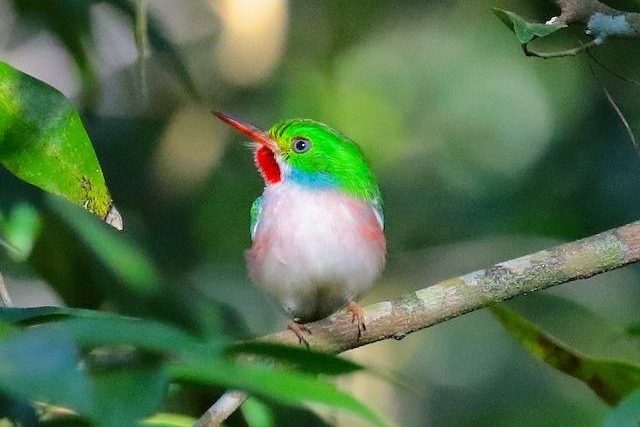Birdfinding.info ⇒ One of Cuba’s commoner endemic birds, it can be found at most, if not all, of the principal birdwatching sites on Cuba and its northern keys. It seems especially common in the western mountains (Viñales and La Güira National Parks and the Sierra del Rosario Biosphere Reserve), the forested sites east of the Zapata Swamp, such as Soplillar and Bermejas, and Cayo Coco.
Fast trill. © Brian Edmonston
Cuban Tody
Todus multicolor
Endemic to Cuba, its northern keys, and the Isle of Youth, where it is common in forests and other wooded areas. Also occurs locally in open brush and disturbed areas.
Identification
Unique within its range. Easily recognized by its tiny size, round body, long bill, bright green upperparts, and ruby red throat.
The most colorful member of its family: neon green above, whitish below, with a pink blush on the sides, a yellowish vent, a mostly red bill, and a blue patch below its cheek.
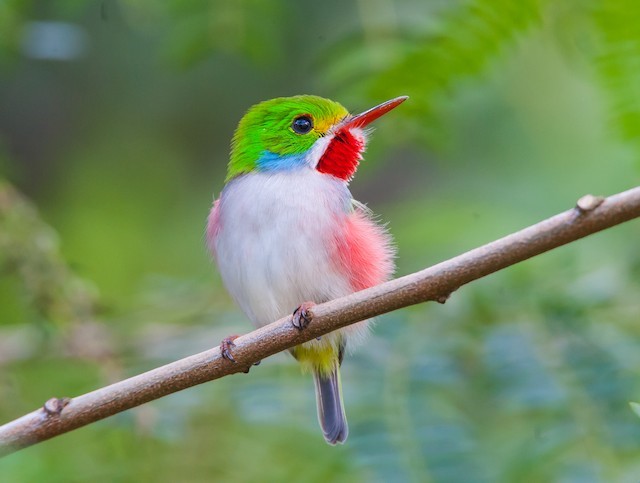
Cuban Tody. (Guantánamo Bay, Cuba; January 30, 2018.) © Wayne Fidler
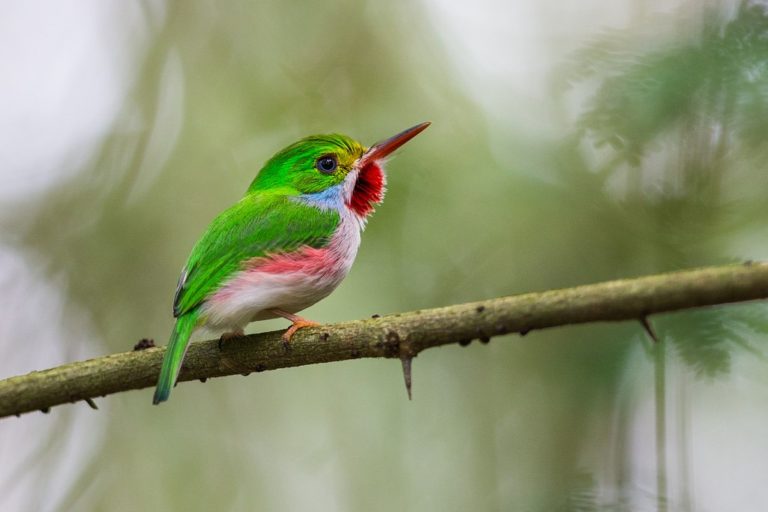
Cuban Tody. (Esperanza, Villa Clara, Cuba; January 12, 2015.) © Jesús Reina Carvajal
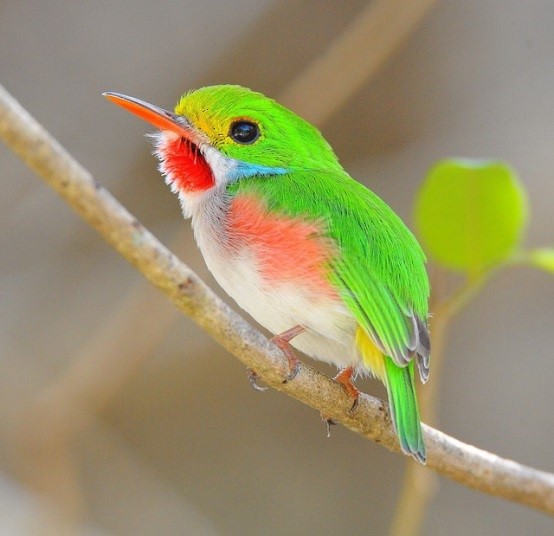
Cuban Tody. (Ridge Line Trail, Guantánamo Bay, Cuba; February 5, 2017.) © Wayne Fidler
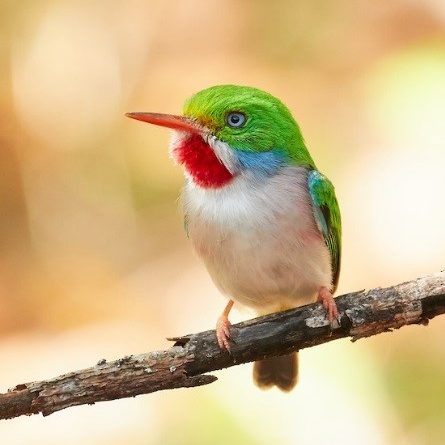
Cuban Tody. (Cayo Coco, Ciego de Ávila, Cuba; April 25, 2017.) © Andrew Haffenden
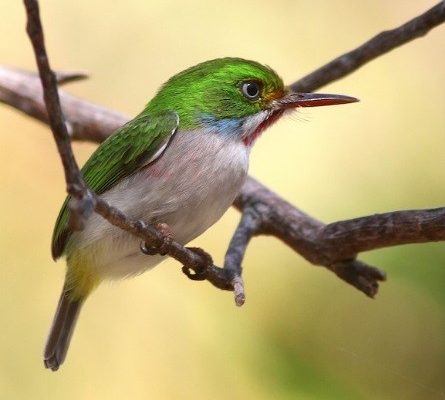
Cuban Tody. (El Cubano National Park, Cuba; January 2, 2014.) © Guy Poisson

Cuban Tody. (Sierra de Najasa, Camagüey, Cuba; May 29, 2013.) © Rafy Rodríguez
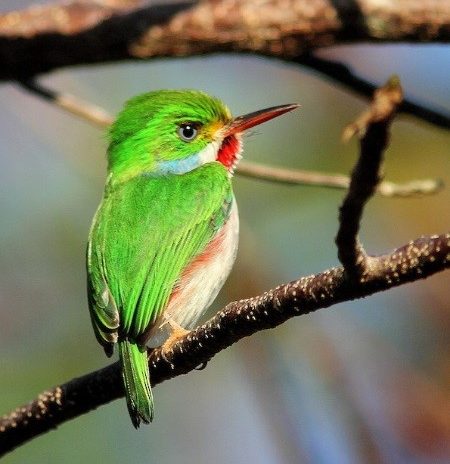
Cuban Tody. (El Cubano National Park, Cuba; January 2, 2014.) © Guy Poisson

Cuban Tody. (Horizontes La Ermita, Pinar del Río, Cuba; February 11, 2015.) © Joshua D. Vandermeulen
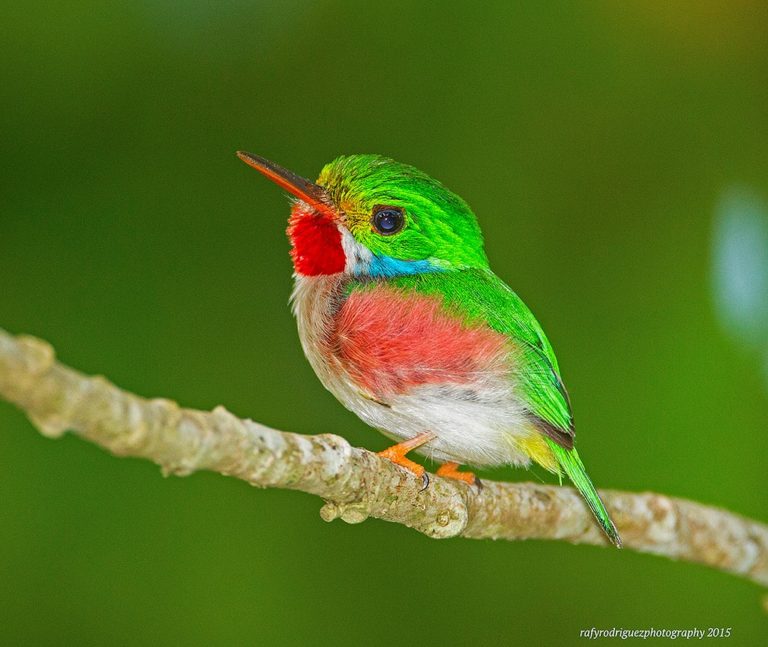
Cuban Tody. (Zapata Swamp, Matanzas, Cuba; June 23, 2011.) © Rafy Rodríguez
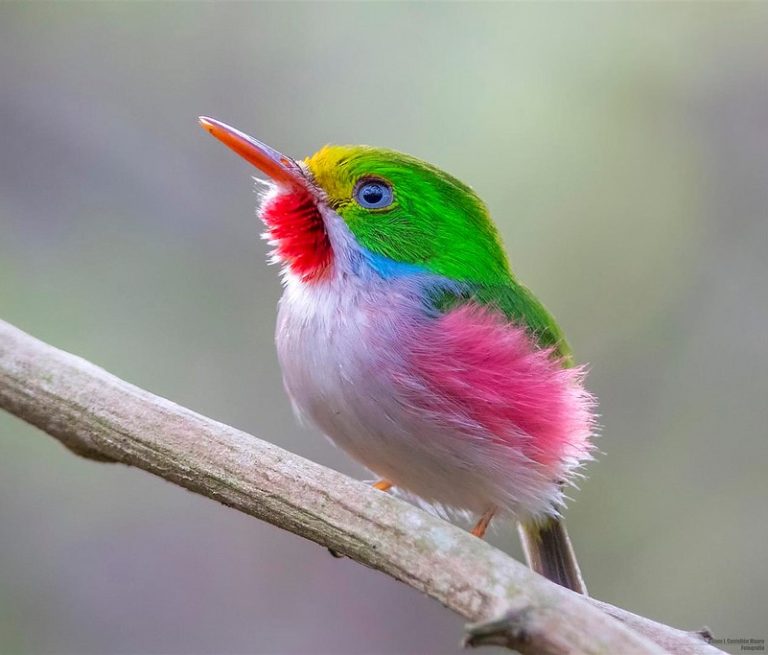
Cuban Tody. (Peninsula de Guanahacabibes National Park, Cuba; April 18, 2015.) © Aslam Ibrahim Castellón Maure
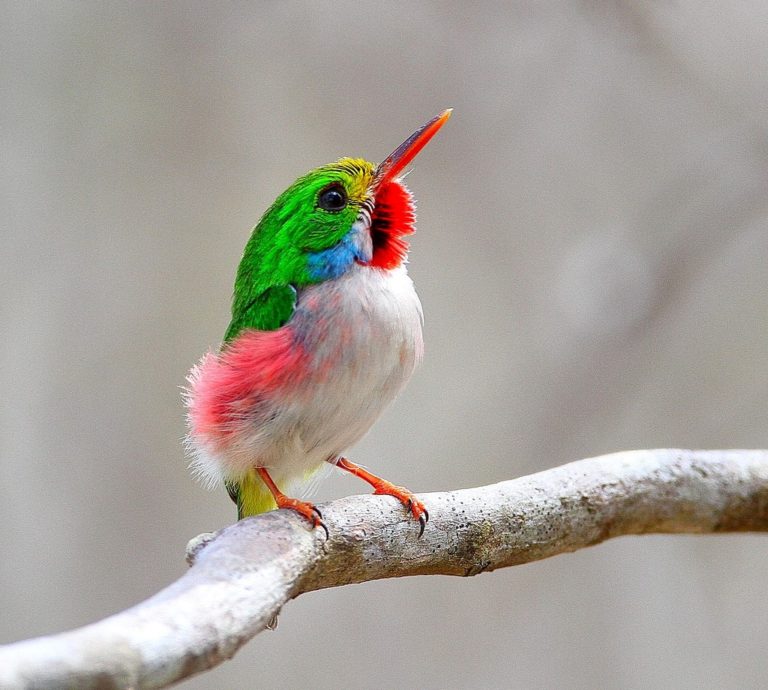
Cuban Tody. (Peninsula de Guanahacabibes National Park, Cuba; May 25, 2013.) © llanero solitario2010

Cuban Tody. (Cienfuegos Botanical Garden, Cienfuegos, Cuba; February 25, 2018.) © Arco Huang
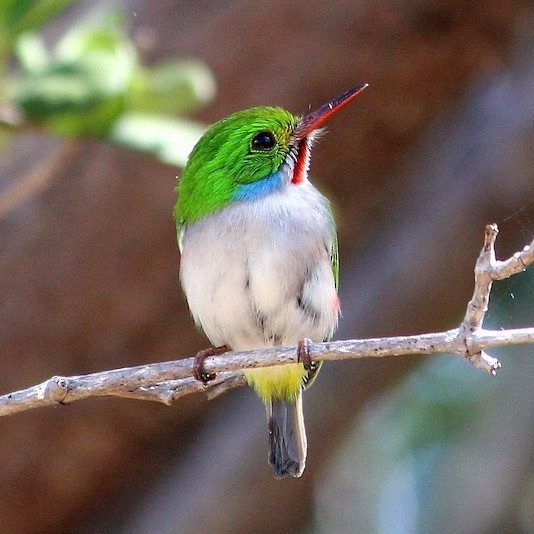
Cuban Tody. (Baconao National Park, Santiago, Cuba; March 4, 2016.) © Craig Evans
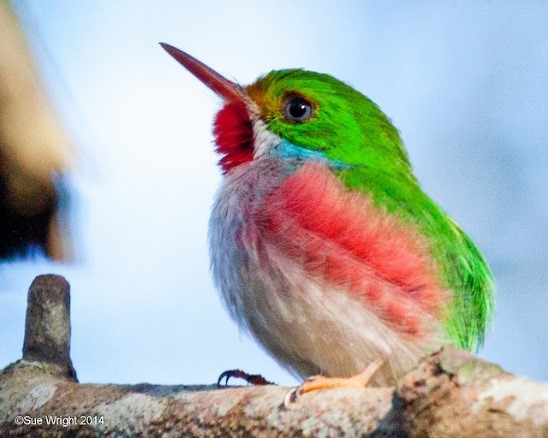
Cuban Tody. (Refugio de Fauna Bermeja, Matanzas, Cuba; March 15, 2014.) © Sue Wright
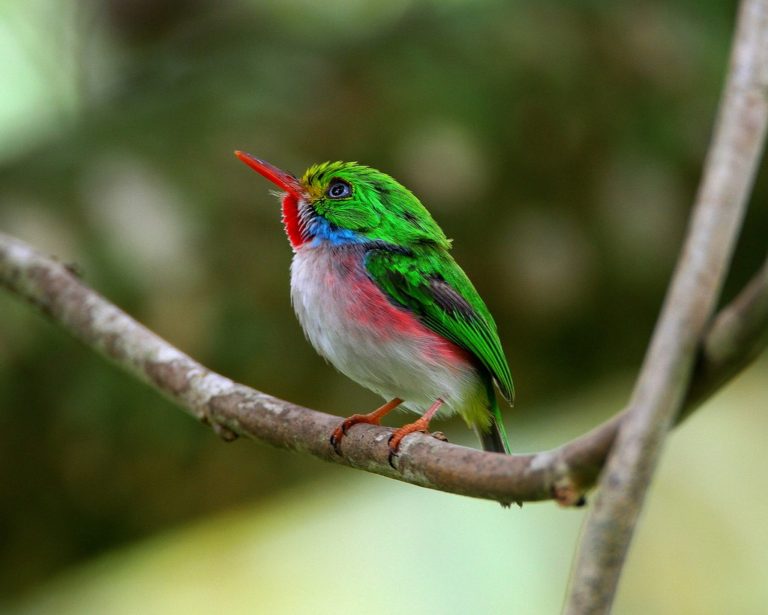
Cuban Tody. (Peninsula de Guanahacabibes National Park, Cuba; May 29, 2013.) © llanero solitario2010

Cuban Tody. (Cañon de Juticí, Siboney Biological Reserve, Santiago, Cuba; December 15, 2009.) © Miguel A. Landestoy T.
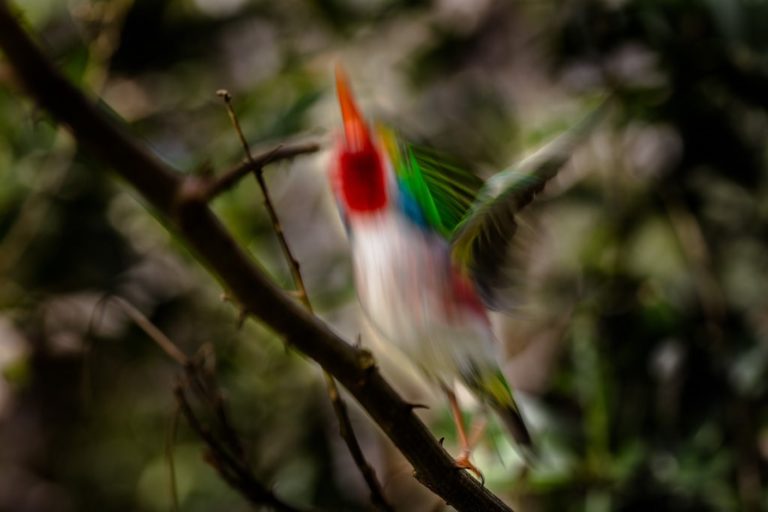
Cuban Tody. (Esperanza, Villa Clara, Cuba; December 29, 2017.) © Jesús Reina Carvajal
Notes
Monotypic species.
References
eBird. 2019. eBird: An online database of bird distribution and abundance. Cornell Lab of Ornithology, Ithaca, N.Y. http://www.ebird.org. (Accessed March 1, 2019.)
Farnsworth, A. 2009. Cuban Tody (Todus multicolor), version 1.0. In Neotropical Birds Online (T.S. Schulenberg, ed.). Cornell Lab of Ornithology, Ithaca, N.Y. https://doi.org/10.2173/nb.cubtod1.01.
Garrido, O.H, and A. Kirkconnell. 2000. Field Guide to the Birds of Cuba. Cornell University Press, Ithaca, N.Y.
Kepler, K.A., and G.M. Kirwan. 2017. Cuban Tody (Todus multicolor). In Handbook of the Birds of the World Alive (J. del Hoyo, A. Elliott, J. Sargatal, D.A. Christie, and E. de Juana, eds.). Lynx Edicions, Barcelona. https://www.hbw.com/node/55813. (Accessed November 29, 2017.)
Raffaele, H., J. Wiley, O. Garrido, A. Keith, and J. Raffaele. 1998. A Guide to the Birds of the West Indies. Princeton University Press, Princeton, N.J.
